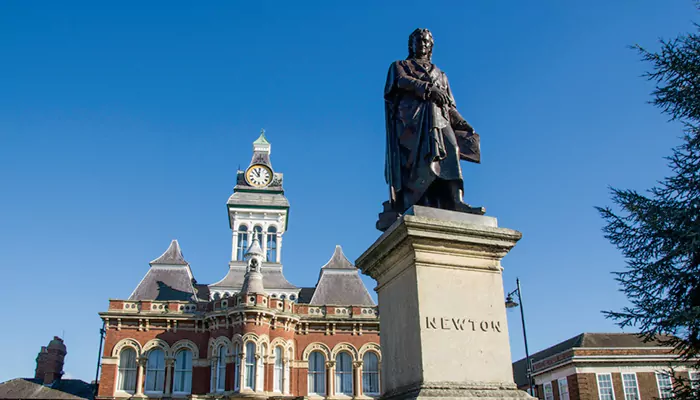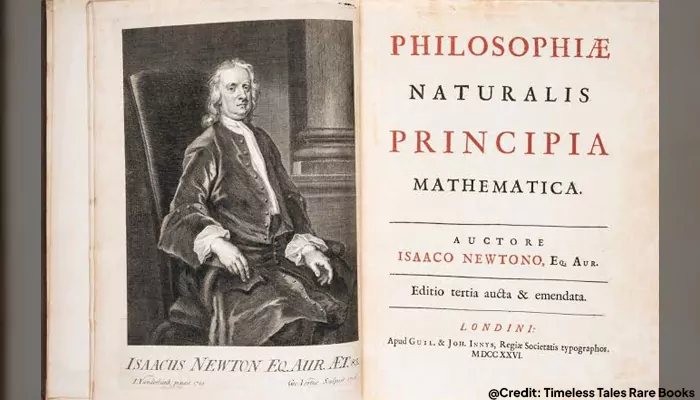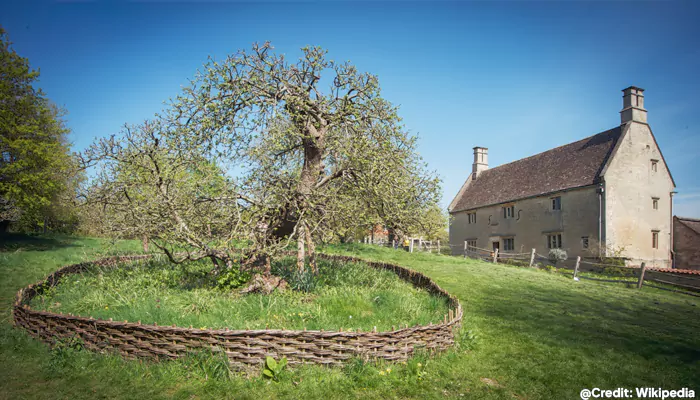
Did Isaac Newton ever observe a falling apple from a tree?
Undoubtedly, the modern science cannot move forward without the works of Isaac Newton, the polymath contributed in physics, mathematics, and astronomy largely. But one story about him stands out—the story of an apple falling from a tree, which supposedly inspired his pathbreaking theory of gravity. On his death anniversary today, let's breakdown the popular apple story: is it fact or fiction?
According to the legends, Newton was sitting under an apple tree when a falling apple struck him on his head. That, ultimately led him to discover the law of gravity. This widely known anecdote has been popularized in physics textbooks, cartoons, or even in scientific discussions for centuries. But did this event really happen?

In reality, there is no historical evidence of apple physically hitting Newton. Basically, the apple story originates from several accounts by Newton’s friends and biographers, especially William Stukeley, who wrote about a conversation with Isaac Newton back in 1726. Stukeley mentioned how Newton described seeing an apple fall while he was in garden, and made him wonder why objects always fall straight down rather going sideways or upwards. This observation led the great scientist think deeply about the forces governing motion, eventually formulating his groundbreaking theory of gravitation.
While the apple tree story has some elements of truth, it is vividly simplified and romanticized over the centuries. Newton’s discovery of gravity was never a sudden moment of realization. Rather, it was a process that took several years of observations, study, and mathematical development. As per historical data, he worked on the laws of motion and gravity for decades and later refined them into what eventually became Principia Mathematica. Published in 1687, this book provided the foundation for classical mechanics, explanations about the forces governing celestial bodies, and many more revolutionary concepts happening in the universe.

The apple story serves as an important aspect of science and technology—it illustrates how great ideas often incepts from simple observations. Several scientific breakthroughs start with curiosity about surroundings, everyday occurrences.
Newton’s contributions are not limited to the discovery of gravitational force. He formulated the three laws of motion, developed calculus, and contributed to optical science. He was the first to explain that white light is composed of various colours. Even in modern day science and technology, his works remain fundamental.
Although, the modern physics has advanced a lot since Einstein proposed theory of relativity refining Newtonian mechanics, Newton’s laws are still essential for understanding motion, forces, and planetary orbits.

Let me share an exciting trivia. The apple tree linked to Isaac Newton still exists today. It is situated at Woolsthorpe Manor, the original birthplace of Newton in England. Scientists, historians, and tourists across the globe visit this site.
The story of apple helping Newton formulate the theories of gravitational forces is a combination of fact and fiction. While there was an apple tree that sparked his curious mind, the idea of an apple falling on his head is more in the side of myth than reality. What’s the truth? Newton’s genius mind and his relentless pursuit of knowledge, helped immensely in the field of science.